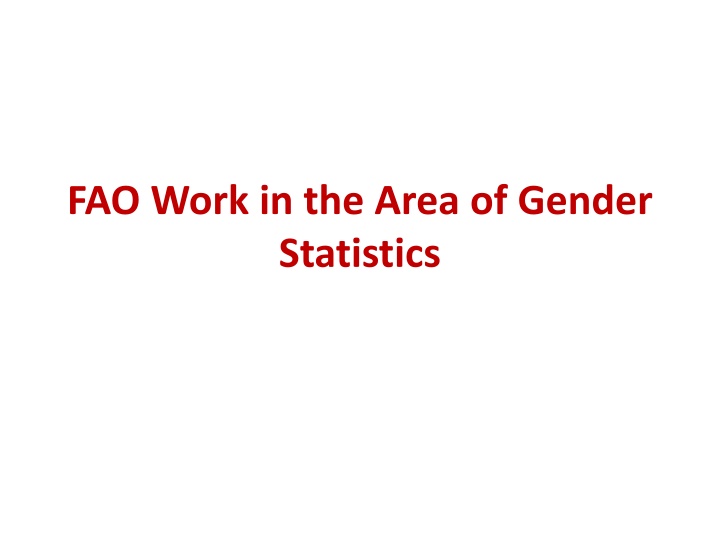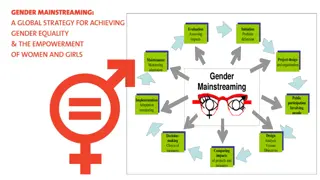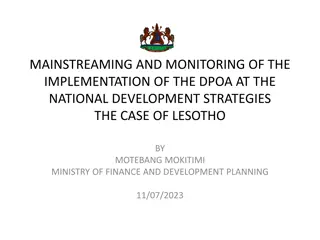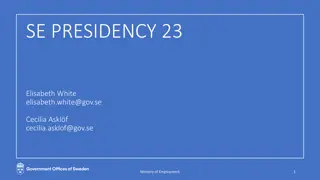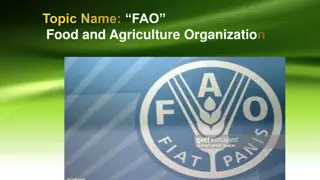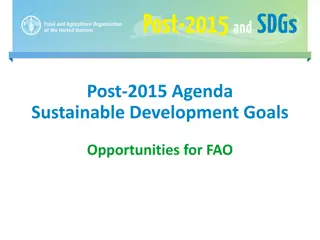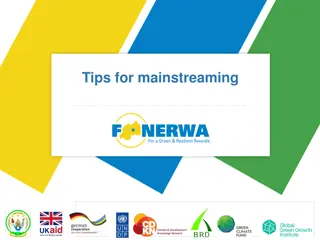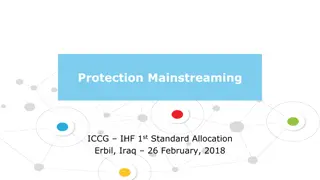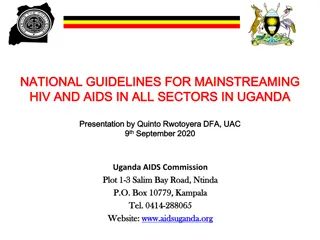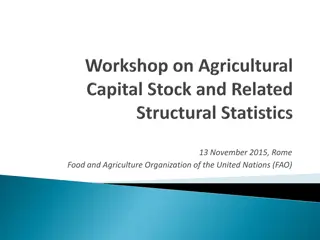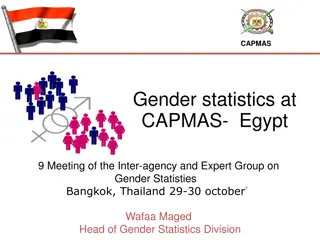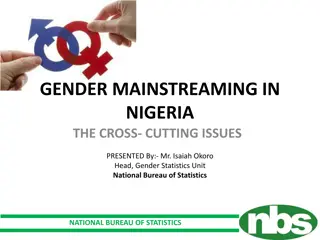FAO Work in the Area of Gender Statistics - Mainstreaming Efforts in Food Security and Agriculture
FAO's initiatives in gender statistics focus on sex-disaggregated data in food security and agriculture. Efforts include generating statistics from National Household Surveys, using the Food Insecurity Experience Scale, and improving data on land ownership.
Download Presentation

Please find below an Image/Link to download the presentation.
The content on the website is provided AS IS for your information and personal use only. It may not be sold, licensed, or shared on other websites without obtaining consent from the author.If you encounter any issues during the download, it is possible that the publisher has removed the file from their server.
You are allowed to download the files provided on this website for personal or commercial use, subject to the condition that they are used lawfully. All files are the property of their respective owners.
The content on the website is provided AS IS for your information and personal use only. It may not be sold, licensed, or shared on other websites without obtaining consent from the author.
E N D
Presentation Transcript
FAO Work in the Area of Gender Statistics
FAO & Gender 2 main areas of work in which the effort of mainstreaming gender is taking place: o food security statistics o agricultural statistics.
Food Security area output 1 Sex-disaggregated food security statistics generated as part of the broader work on food security global monitoring. The gender-focused retabulation of National Household Surveys (NHS). The FAO Statistics Division set up a new database ( Indicators from Household Surveys (gender, area, socioeconomics ) in FAOSTAT that facilitates the dissemination of a key subset of food consumption indicators extracted from 43 NHS (total of 38 countries). Indicators are disaggregated at sub-national level, keeping a strong focus on gender. Impossible to generate individual statistics on food security. Yet, the data have been re-tabulated by the sex of the household head controlling for key economic and demographic variables.
Food Security area output 2 The FAO Voice of the Hungry Project promotes the use of a Food Insecurity Experience-based Scale (FIES) as a reliable method to collect world wide data on food access. Although the FIES is not the first individual experience-based scale in the field of food security, it is the first individual-level measure that is being applied into a large number of countries in a standardized manner. Therefore it will be the first tool able to generate comparable sex disaggregated data on food security on a large number of countries. A complete comparable dataset is expected to be available by March 2015.
Agricultural area output 1 The work on sex-disaggregated statistics is related to the Agricultural Census (AC), the Global Strategy, and the Rural Livelihood Monitoring work. Recommendations for strengthening the availability of sex disaggregated data on land ownership in the context of AC and agricultural surveys. work started in the context of the EDGE project. The preliminary recommendations consolidated into a technical report and a paper were discussed with country experts and are being used to draft a new chapter of the WCA 2020 guidelines (intra-holding responsibilities and ownership). Draft of this chapter is available at: http://www.fao.org/economic/ess/ess- events/wca2020trm/en/
Agricultural area output 2 The development of a database that will disseminate sex- disaggregated data on land ownership. Activity, done in collaboration with the Social Protection division and in partnership with IFPRI, started with the idea to expand and strengthen the Gender and Land Right database. In this case, not only we are extracting new data from the ACs, but we will be mining national household surveys to generate indicators related to women and land ownership, following a rigorous framework compliant with the IFPRI approach.
Agricultural area new areas Under development, a work-plan for a research component on gender to be included in the Global Strategy. Finally gender is mainstreamed to the extent possible into all the indicators that the FAO is calculating to monitor rural livelihoods. FAO is developing a Rural Livelihoods Monitor (RLM) ie., a comprehensive database that will bring together data on agriculture and rural development relevant for monitoring rural poverty and inequalities and rural livelihood conditions. Relevant sex-disaggregated indicators for the RLM are being identified
